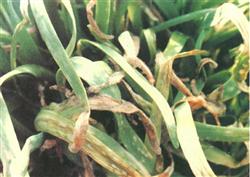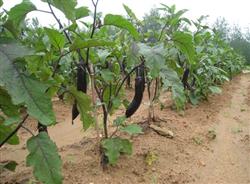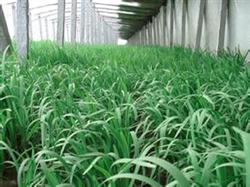Pay attention to check and prevent Botrytis cinerea

Botrytis cinerea is the main disease of protected leek, which seriously affects the quality of leek on the market during the Spring Festival. the price of leek is generally the highest during the Spring Festival every year. once it gets sick, it will cause great economic losses to farmers. Therefore, the prevention and control of Botrytis cinerea is very important for the production of Chinese chives in protected areas. First, symptoms 1. White spot. There are small white or grayish brown spots on the front and back of the leaf, developing downward from the leaf tip. The lesion is fusiform or oval in shape and converges into patches in the later stage of the disease, resulting in half-leaf or whole-leaf scorch. two。 Dry tip. Rot downward from the cutting edge of the stubble, showing a water immersion at first, then light green, with brown wheel lines, the disease spot is mostly semicircular or "V" shaped after spread, and can be extended downward by 2 to 3 cm, showing yellowish brown, the surface is grayish brown or grayish green fluffy mildew. 3. Wet rot. When the humidity is high, the withered leaf surface is densely gray to green villous mildew, accompanied by mildew smell, and there are no white spots on the leaves. Second, prevention and control methods 1. Disease resistant varieties were selected. Such as Chinese leek No. 2, 791 snow leek, Zaofa leek No. 1 and so on. two。 Clean the countryside. After the leek is harvested, remove the diseased body in time, bury it deeply or burn it, to prevent the spread of germs. 3. Timely ventilation and dehumidification is the key to the prevention and treatment of the disease. Ventilation should be determined according to the growth of leeks. Freshly cut leeks or when the external temperature is low, ventilation should be small or delay ventilation, strictly guard against sweeping wind. 4. Cultivate strong seedlings and pay attention to stubble. Application of organic fertilizer, timely topdressing, watering, weeding, good stubble, improve plant disease resistance. Before planting, 50007000kg of mature farm manure, 15kg of diammonium phosphate and 50kg of plant ash were applied per mu, deeply into the soil, irrigated and irrigated in time after planting. Topdressing twice before frost, applying 15kg urea per mu each time, and watering in time after topdressing. 5. At the initial stage of the disease, 65% methyl thiocarbamate or 5% promethopril powder or 5% isobarbazide dust was sprayed with 1 kg per mu. In addition, it can also be sprayed with 1000 times of methyl thiocarbamate wettable powder or 1000 times of 25% prochloraz EC or 1200 times of 40% pyrimidine suspension, once every 10 days and 2 times in a row.
- Prev

Technology of picking and scion with multiple buds of eggplant in protected field
Eggplant grafting cultivation has become the most important way of disease resistance and yield increase in eggplant production in protected areas. When eggplant is grafted and raised. The one-seedling-one-bud scion picking technique is generally adopted, which has the advantages of high seed cost and high production cost. To this end, according to the principle of top dominance of plant growth, combined with eggplant seedling side.
- Next

Choose leek to remove the root half an inch of the root pesticide at most soak in light salt water first
First, temperature management. Leek likes to be cold and cool, and the suitable temperature for growth is 15 mi 24 degrees, which should be kept out properly during the day. In order to promote sprouting, the daytime room temperature should be kept at 18 Mel 25 degrees after the buckle shed and at 17 Mel 23 degrees after sprouting. Before the Chinese chive is harvested, the daytime temperature is 15 ~ 22 degrees, and the night temperature is 10 ~ 12 degrees. From now on, every cut.
Related
- Where is it suitable to grow horseradish in China? it is expected to see the middle altitude horseradish in Alishan.
- How to prevent tomato virus disease reasonably? (Control methods included)
- Many people like to plant towel gourd on the balcony. What are the main points of this method and management?
- What crops can chili peppers be mixed with?
- Fertilization techniques and matters needing attention in Tomato
- What are the grafting techniques for peach seedlings in spring?
- Harm and control methods of root swelling disease of Chinese cabbage
- What are the pests of sweet potatoes? How to prevent and cure it?
- Symptoms, causes and Control methods of navel Rot in Tomato
- The cause of "Cucumber rotten bibcock" in Farmers' planting Cucumber and its Control Plan

